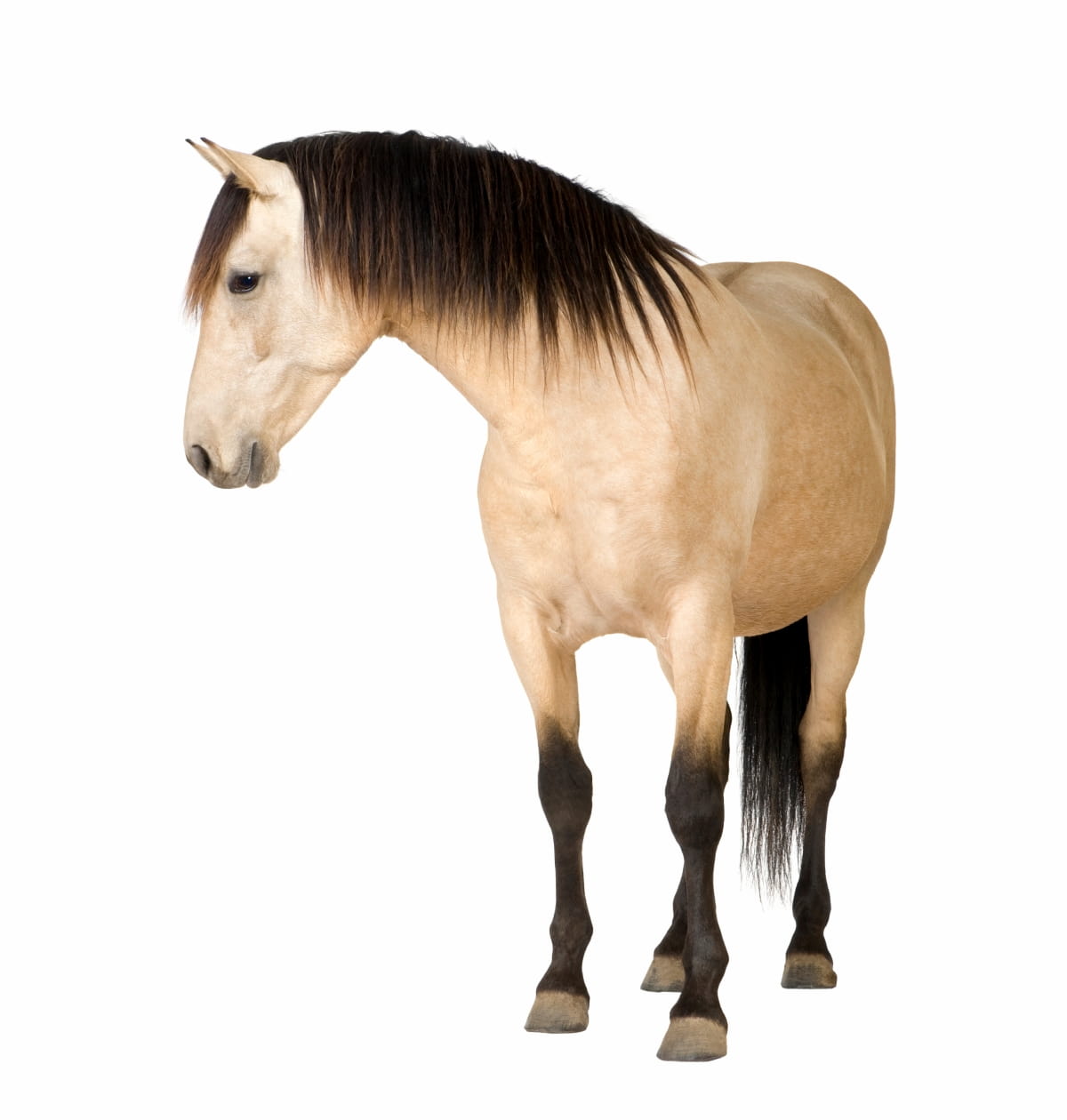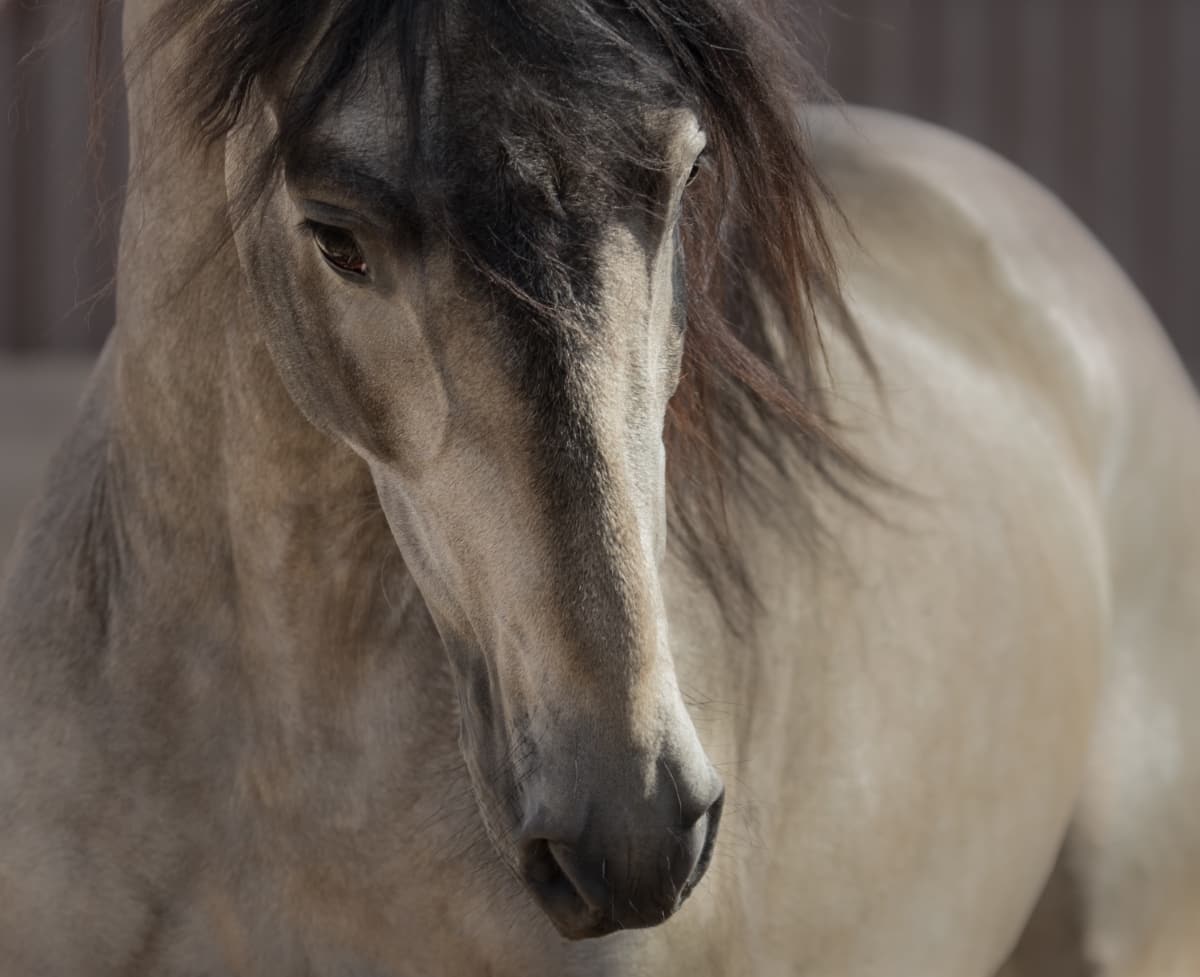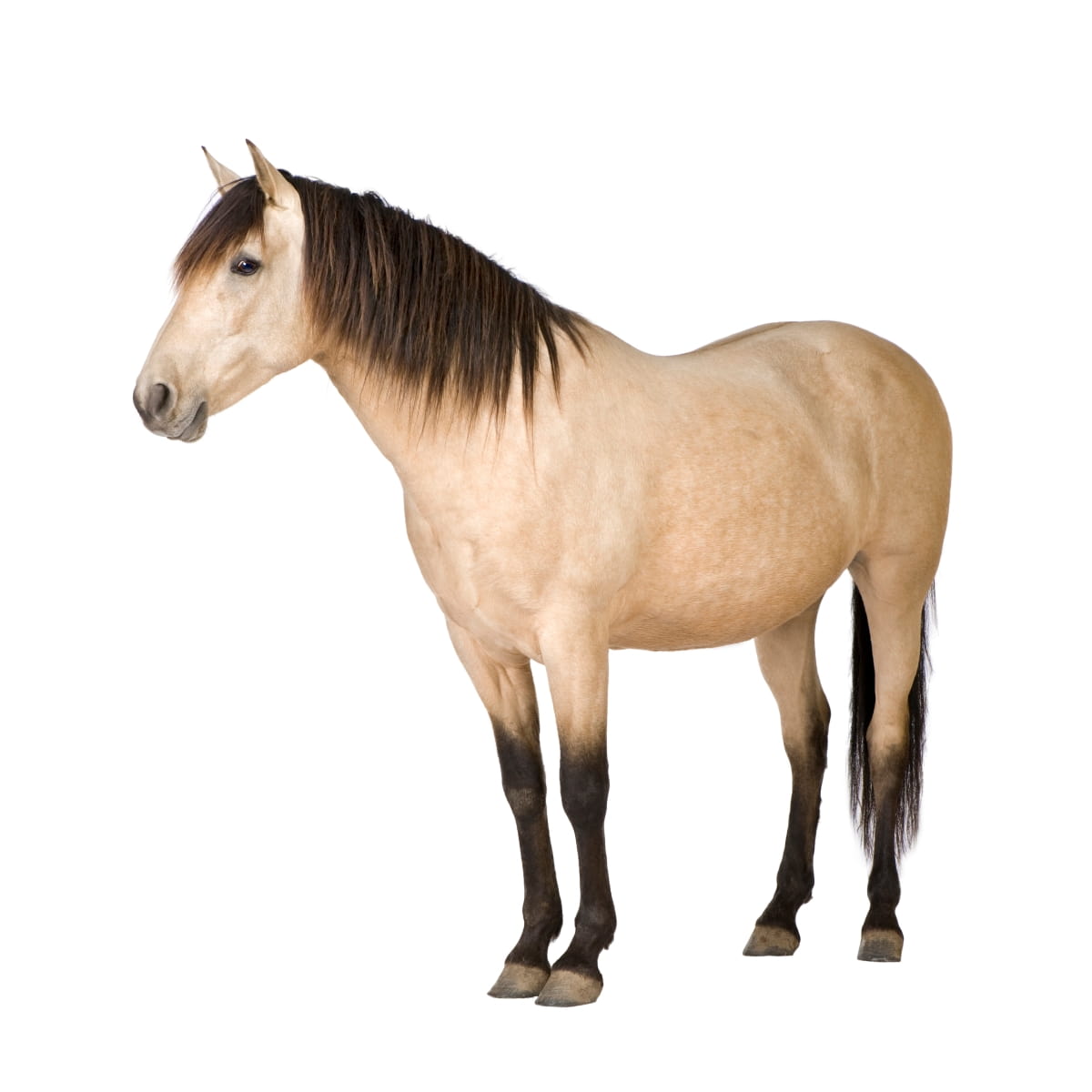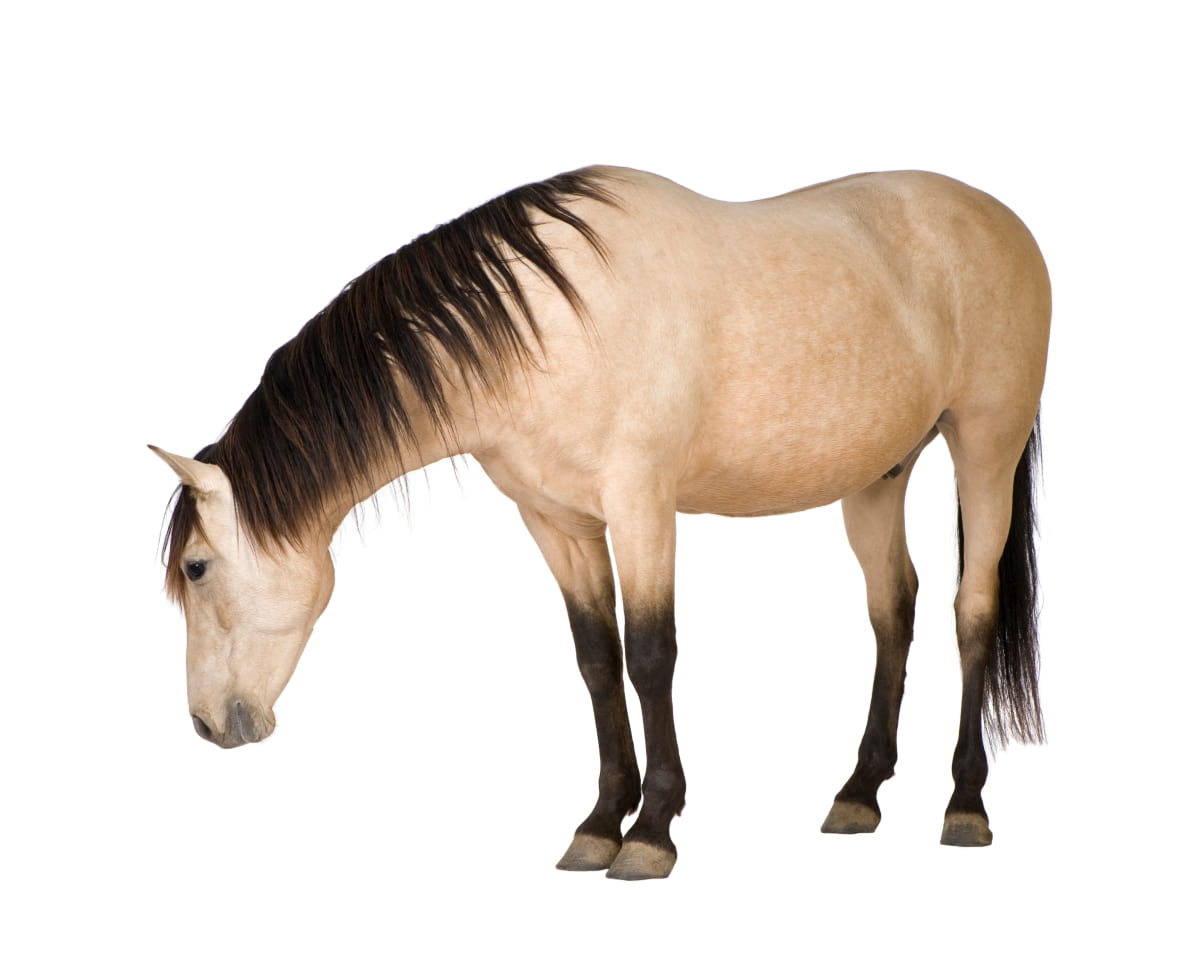The buckskin color is defined by its distinctive tan or gold coat, which results from specific genetic factors influencing pigment distribution in the horse’s hair. Black points, including the mane, tail, and lower legs, hallmark features of the buckskin, beautifully contrast this color. The intensity and exact shade of the coat can vary, leading to a range of color variations within the buckskin classification.
Introduction to Buckskin Horse
History and Origins of Buckskin Horses
The history and origins of buckskin horses trace back to various parts of the world, where horses with buckskin coloration were prized for their beauty and utility. Buckskin horses, originating from North America, were greatly esteemed by Native American tribes and in Europe and other areas where their lineage was cultivated for both their distinctive color and abilities. The buckskin color is not limited to a single breed. Still, it occurs in various horse breeds, contributing to the rich diversity and widespread appeal of buckskin horses in the equestrian community.

Genetics of the Buckskin Color
Understanding Coat Color Genetics
The stunning coat of buckskin horses results from complex genetic factors that influence pigment distribution in the horse’s hair. These genetics determine the shades seen in buckskin horses, from light cream to dark gold, and are a key aspect of breeding programs to produce this desirable color.
The Difference Between Buckskin, Dun, and Palomino
Understanding the genetic differences between buckskin, dun, and palomino horses is crucial for breeders and enthusiasts. While buckskins are characterized by their golden coat and black points, dun horses have a similar color palette but with added primitive markings such as a dorsal stripe. Palominos, on the other hand, display a golden coat without the black points.
Breed Profiles Featuring Buckskin Color
Common Breeds that Produce Buckskin Horses
Several horse breeds are known for producing the beautiful buckskin color, including Quarter Horses, Spanish Mustangs, and Morgan horses. Each breed brings its own breed-specific characteristics to the table, such as athleticism, endurance, and temperament, making buckskin horses versatile and capable in various equestrian disciplines.
Breed-Specific Characteristics
Breed-specific characteristics in buckskin horses can include a range of physical and temperamental traits, such as muscular build, agility, and a calm demeanor. These characteristics make buckskin horses suitable for various uses, from ranch work to competitive riding, highlighting the breed’s adaptability and appeal.
Buckskin Horse Lifespan
The lifespan of buckskin horses, typically 25 to 30 years, is influenced by genetics, diet, and quality of care. This longevity and their hardy nature make buckskin horses a long-term companion for those willing to invest in their care and well-being.
Physical Characteristics of Buckskin Horses
Identifying Marks and Features
Buckskin horses are easily identifiable by their unique coat color, black mane, tail, and lower legs. Still, they can also exhibit other distinguishing marks and features, such as white facial markings or socks. These features can add to the individuality of each horse, making them stand out in a crowd.
Variations in Buckskin Shades
The variations in buckskin shades range from a pale, creamy color to a rich, dark gold, influenced by genetics and environmental factors. Understanding these variations is important for breeders and enthusiasts, as it affects the aesthetic and market value of the horses.
Buckskin Horse Price Size
The cost of buckskin horses can significantly fluctuate due to factors like breed, lineage, training, and physical attributes, resulting in prices spanning from thousands to tens of thousands of dollars. The size of buckskin horses, typically standing between 14 and 16 hands, can also affect their suitability for different riders and disciplines, making size an important consideration when buying them.
In case you missed it: Horse Breeding Project Report: Production Economics, Cost, and Profit Analysis

Temperament and Behavior
Common Behavioral Traits
Buckskin horses are often praised for their even temperament and willingness to work, making them suitable for riders of all levels. Their intelligence and adaptability contribute to their success in various disciplines, from dressage to trail riding, reflecting the breed’s versatile nature.
Suitability for Various Disciplines
The suitability of buckskin horses for various disciplines is a testament to their versatility and well-rounded nature. Whether competing in Western events, excelling in endurance riding, or participating in therapeutic riding programs, buckskin horses can adapt and thrive, making them popular among equestrians.
Health and Nutrition
Special Health Considerations for Buckskin Horses
While buckskin horses are generally hardy, they may have special health considerations that require attention, such as sensitivity to certain conditions related to their coat color genetics. Regular veterinary examinations and proactive healthcare measures are essential for preventing and managing health issues, thus safeguarding the overall well-being of the horse.
Nutritional Requirements and Diet Management
Their nutritional requirements vary based on age, activity level, and health status, making diet management an important aspect of their overall care. Providing a mix of quality forage, grains, and supplements, along with access to clean water, can help meet these needs and promote optimal health.
Care and Maintenance
Grooming Techniques for a Healthy Coat
Effective grooming techniques are essential for maintaining the health and appearance of a buckskin horse’s coat. Regular brushing, bathing, and attention to mane and tail care can enhance the natural beauty of their coat, prevent skin issues, and provide an opportunity for bonding between horse and owner.
Shelter and Space Requirements
Providing adequate shelter and space is vital for the well-being of buckskin horses. Access to clean, dry shelter protects them from harsh weather conditions, while ample turnout space allows for exercise and socialization, essential for their physical and mental health. Proper care and maintenance of these spaces ensure a safe and healthy environment for buckskin horses to thrive.
Training and Exercise
Training Tips for Buckskin Horses
Training buckskin horses effectively involves understanding their temperament and learning style, often characterized by intelligence and eagerness to please. Utilizing positive reinforcement and consistent training techniques can produce exceptional outcomes, amplifying the horse’s inherent talents while fortifying the connection between the horse and its trainer.
Exercise Needs and Schedules
Buckskin horses require regular exercise to maintain their physical health and mental well-being. An exercise schedule should be tailored to the horse’s age, fitness level, and training requirements, incorporating a mix of groundwork, ridden work, and free movement. Adequate exercise improves cardiovascular health and muscle tone and helps prevent behavioral issues by providing mental stimulation and an outlet for energy.
In case you missed it: Everything You Need to Know About Horse Feeding: A Beginners Guide

Uses and Disciplines
Competitive Disciplines for Buckskin Horses
Buckskin horses excel in various competitive disciplines, showcasing their versatility and adaptability. They are commonly seen in Western events such as reining and cutting but also perform well in English disciplines like show jumping and dressage. Their athleticism and willing nature make them suitable for high-level competition, and their striking appearance often sets them apart in the show ring.
Recreational and Work-Related Uses
Beyond competitive arenas, buckskin horses are valued for recreational and work-related uses, including trail riding, ranch work, and therapeutic riding programs. Their composed demeanor and robust physique render them dependable choices for recreational riding. At the same time, their work ethic and agility are assets in farm and ranch settings, demonstrating the breed’s multifaceted utility.
Buying and Breeding Buckskin Horses
Tips for Selecting a Buckskin Horse
When selecting a buckskin horse, it’s important to consider factors beyond coat color, such as conformation, health, temperament, and training level. Prospective buyers should assess the horse’s suitability for their intended use and ensure a good match regarding rider experience and horse ability. Pre-purchase examinations by a veterinarian can also provide valuable insights into the horse’s health and soundness.
Considerations for Breeding Buckskin Color
Breeding for the buckskin color involves understanding the genetic mechanisms behind coat color and selecting parent horses accordingly. It’s important to prioritize health, temperament, and breed standards alongside color to produce well-rounded offspring. Breeders should also be aware of the potential for color variations and the impact of coat color genetics on the breeding process.
Buckskin Horse Price
The price of buckskin horses can vary significantly based on age, breeding, training, and lineage, typically ranging from $2,000 to $10,000 or more for high-quality individuals. Rare bloodlines, exceptional training, and proven competition records can increase a buckskin horse’s value, making them a significant investment for enthusiasts and professionals.
In case you missed it: Top 10 Best Benefits of Horse Manure in Agriculture

Conclusion
With their captivating golden coats and versatile capabilities, Buckskin horses continue to charm the equestrian world, blending beauty with functionality.
Note: The images presented in this post are intended solely for representation purposes. The images are meant to serve as visual aids and should not be relied upon as accurate representations of their real-life counterparts.
- Feed Your Flock for Less: Top 10 Tips to Save on Chicken Feed
- Ultimate Guide to Ossabaw Island Hog: Breeding, Raising, Diet, and Care
- Hatching Answers: The Top 10 Reasons Your Chickens Aren’t Laying Eggs
- Eggs and Economics: Breaking Down the Cost of Raising Backyard Chickens
- Defend Your Greens: Proven Methods to Keep Iguanas Out of Your Garden
- Ultimate Guide to Cinnamon Queen Chicken: A Comprehensive Guide for Beginners
- Ultimate Guide to California Tan Chicken: Breeding, Raising, Diet, Egg-Production and Care
- Ultimate Guide to Marsh Daisy Chicken: Breeding, Raising, Diet, and Care
- 10 Types of Chicken Farming Businesses You Can Start for Profits